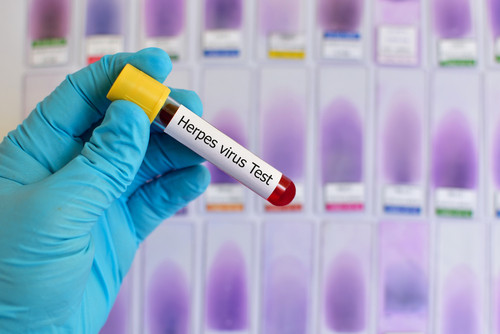
290 kHz -294 kHz Herpes simplex 1 virus:
Infectivity category: 4.
Incubation period 1-5 days
Symptoms:
- Inflammation of the mouth
- Conjunctivitis and pharyngitis
- Hornification of the skin (corneal horny layer)
- Eczema
However, the virus can also penetrate the peripheral and central nervous system, cause acute and chronic nerve inflammation and destroy tissue.
Dangerous complication:
- Encephalitis (inflammatory brain disease).
The virus can reproduce in any cell
The infection remains in the body for life, but the latent phase of the disease can reduce infectivity
The pathogen can survive in the body for many decades, but during these years asymptomatic and highly active phases alternate
In old age or at a time when the body loses its natural immunity, it is involved in the development of various chronic diseases such as
- Multiple sclerosis
- Cerebral infarction
- Alzheimer's disease
etc.
It often causes inflammation of the nerves (nerve fibres) along with herpes zoster.
Common resonances:
344-345, 372, 402, 450
344 kHz - 345 kHz Herpes simplex 1 virus:
see 290-294
352 kHz - 363 kHz: Herpes simplex 2. genital herpes:
Infectivity category: 2-3.
Herpes simplex 2 causes ulcers in the genital and rectal area.
Herpes simplex 2 spreads through sexual intercourse and can also infect the oral mucosa during oral sex. It has an immunosuppressive character.
Serious complications such as meningitis can occur.
Herpes simplex 2 may be involved in cervical cancer.
Herpes simplex 2 alone does not cause tumours without the involvement of another pathogen. Sexual partners should be treated at the same time.
Common resonances:
344-345, 372, 402, 450
see 290-294
402 kHz: Herpes simplex 1 virus:
see 290-294
450 kHz: Herpes simplex 1 virus:
see 290-294
